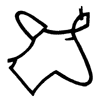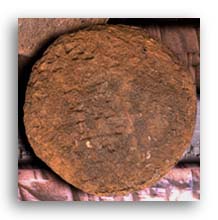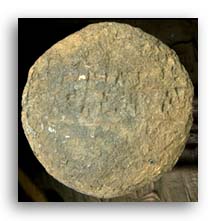
|
 |
| Writing is so basic to our lives that it's hard to imagine a world without
it. But humans didn't always write...
Why did people begin writing? As people came together and began living in towns and cities, they needed ways of keeping records for business and government. It was probably difficult for priests and officials to remember who had made their donation to the temple or what land people owned. How did they write? If you were trying to communicate to someone and you didn't have a written language, how would you do it? You might use pictures to tell them...That's how writing began in the ancient Near East.
|
 |
Around 3500 B.C. a system of writing developed using pictographs. A pictograph is a picture that represents a word. For example, a picture of a donkey represents a donkey. A large number of tablets with pictographic writing were discovered by archaeologists in the ancient city of Uruk in Sumeria. |
| But the pictographic system used too many symbols, and it developed
into a simpler system that we call "cuneiform" writing. Cuneiform is made
of wedge-shaped marks that represent sounds, and can be combined to form
words. Eventually cuneiform writing used over 1800 signs!
Scribes wrote on tablets made from the clay that was available nearby. They pressed a "stylus" made from a reed into the clay to make the wedge-shaped impressions. Then these tablets were dried or baked so that they would last.
|
| Who learned to write?
Children from wealthy families, usually boys, were able to go to scribal school. These schools were called "edubba", which means "tablet house." They learned to write by copying texts over and over again. Archaeologists have found hundreds of students' tablets filled with exercises. After they finished their training, scribes could work for the temple or palace, and were important members of ancient Near Eastern society. |
 |
 |
| See if you can find all the words in our "Writing Word Find!" |
 |
 |
 |
 |
 |
 |
 |
© Michael C. Carlos Museum of Emory University,
Memorial Art Gallery of the University of Rochester and Dallas Museum of Art
For more information please contact odyssey@emory.edu.
Last Update: